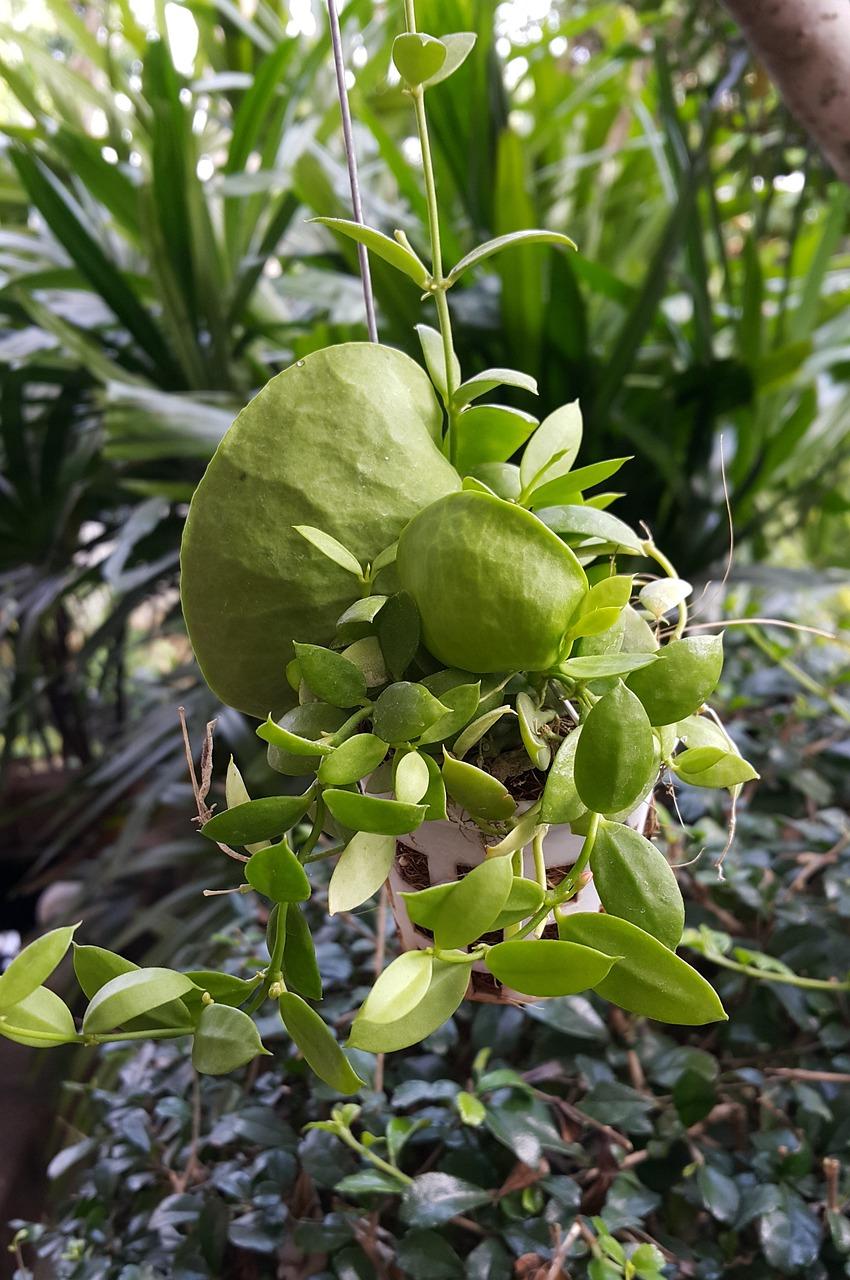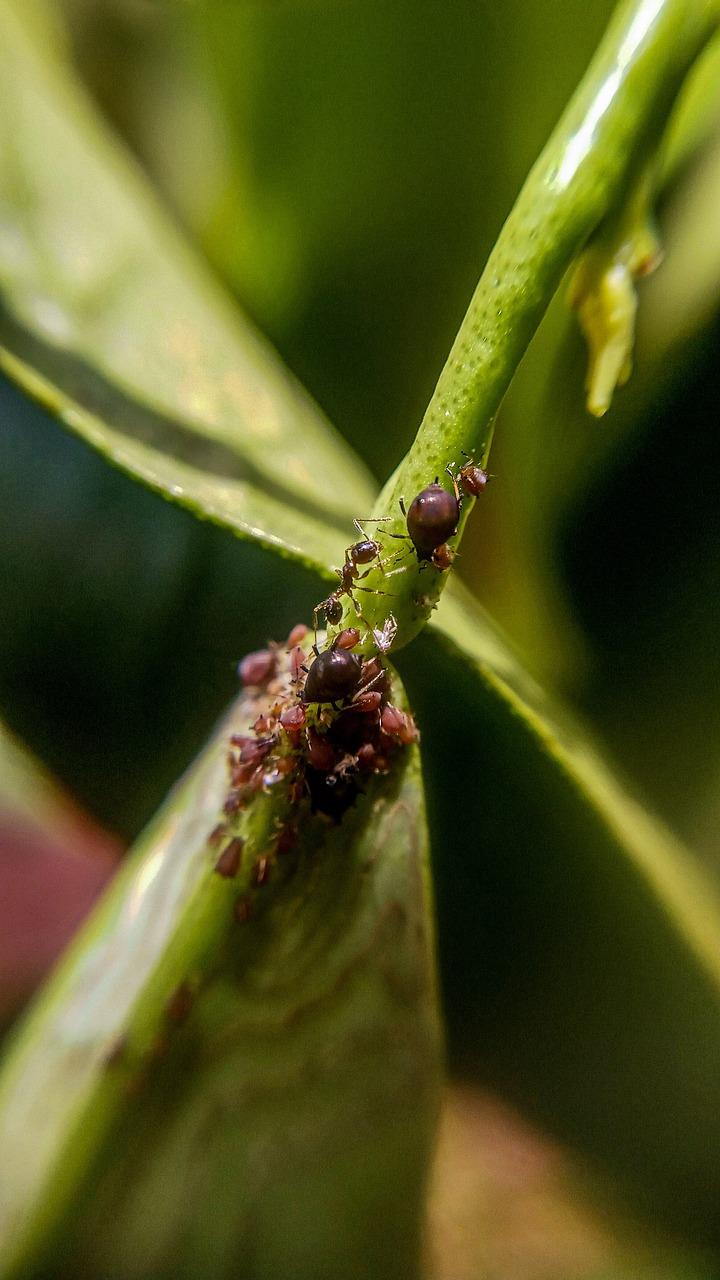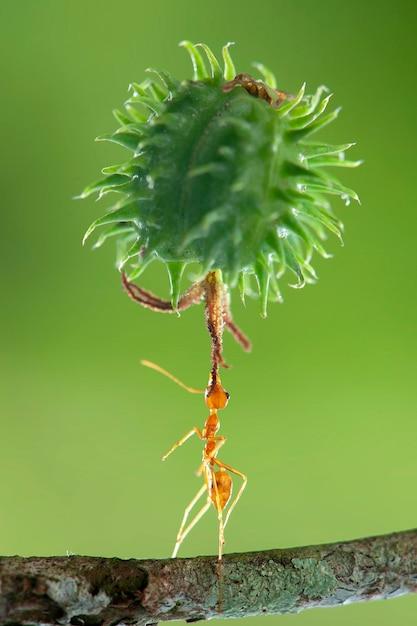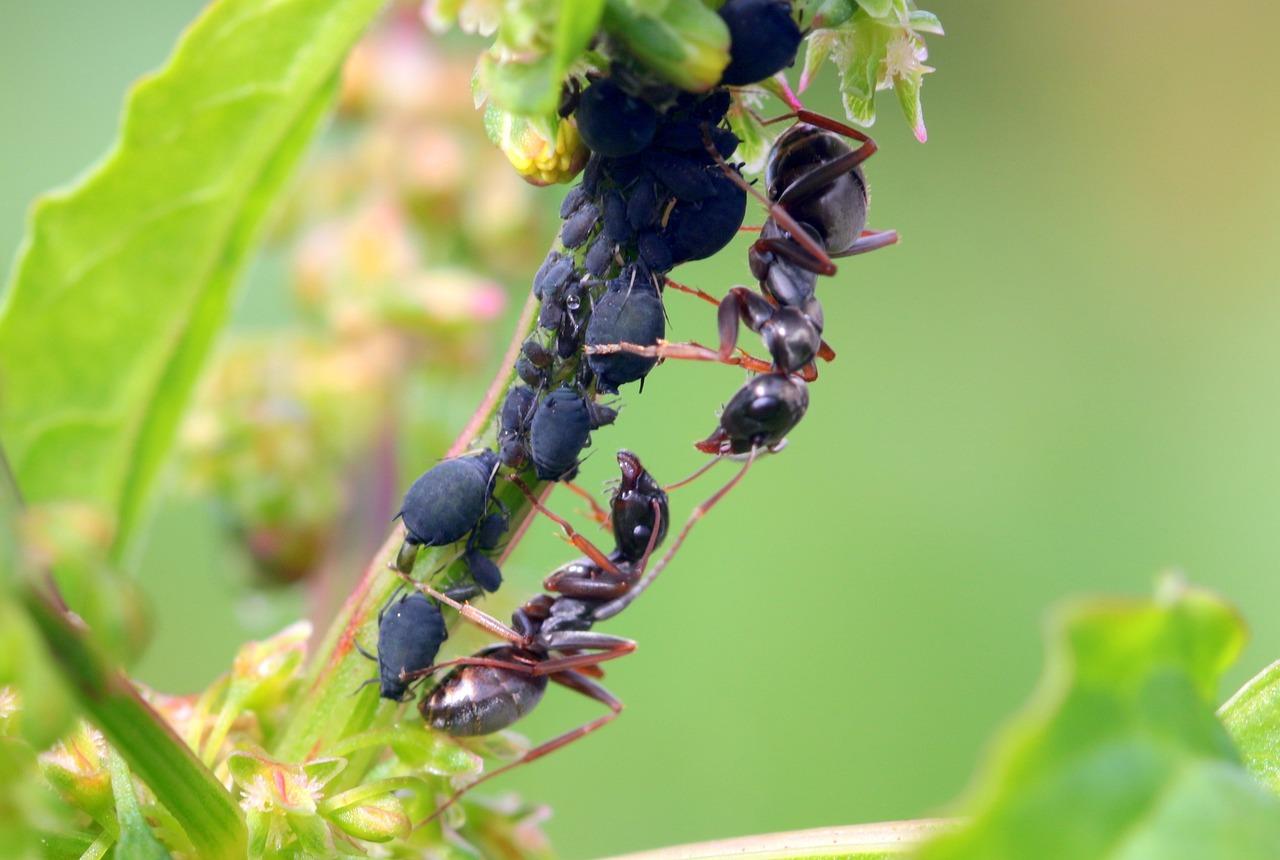Welcome to our blog post on the fascinating world of ant plants! Have you ever heard of hydnophytum and dischidia pectinoides? These unique plant species have a special relationship with ants that goes beyond mere coexistence. In this article, we’ll explore the intriguing questions surrounding ant plants – do ants really live in them? Why are they called ant plants? And most importantly, how do you properly care for these exceptional botanical wonders? Let’s delve into this captivating topic and uncover the secrets of ant plants together.
The Fascinating World of Ant Plants
Imagine a world where plants have employees, and ants have properties. Well, welcome to the kingdom of ant plants! These amazing botanical wonders have a unique relationship with ants that will make your garden feel like a bustling corporation.
A Botanical Partnership
Ant plants are not just your ordinary plants. They have formed a special bond with ants that goes beyond mere acquaintance. Imagine ants as the plant’s employees, working diligently to protect and nurture their green employers, while the plants provide shelter, food, and a cozy place for ant colonies to call their own.
The Job Description
Let’s take a sneak peek into the job description of ants working for ant plants. First and foremost, ants provide protection to their leafy bosses. They repel potential herbivores, acting as security guards against any greedy mouths that dare to take a bite.
Housing and Garden Maintenance
Not only are ants expert security personnel, they are also great gardeners. Ants work around the clock to remove any invasive plants that might compete with their beloved ant plant. Think of it as a beautiful, green corporate campus where ants meticulously tend to their garden to ensure their employer thrives.
Benefits and Compensation
In return for their unwavering commitment, these hardworking ants receive a generous package of benefits. Ant plants provide their ant employees with special structures called “domatia,” which are hollowed-out chambers for the ants to live in. It’s like their own cozy apartment within the greenery.
Ant Cafeteria
But wait, there’s more! Ant plants don’t stop at providing shelter; they also offer a daily buffet for their diligent workers. They produce nutrient-rich food bodies, also known as “extrafloral nectaries,” which are like little snack bars for the ants. It’s safe to say that ants working for ant plants have a foodie dream job!
Wonders of Coevolution
The relationship between ant plants and ants is a perfect example of coevolution, where two separate species evolve together for their mutual benefit. This remarkable partnership has developed over time, resulting in plants with specialized structures and ants with unique behaviors, all to ensure their joint survival.
In the enchanting realm of ant plants, the boundaries between plants and animals blur, and nature presents us with yet another mesmerizing spectacle. The intricate relationship between ant plants and ants showcases the wonders of evolution and the remarkable cooperation among different species in the natural world. So next time you spot an ant on a plant, remember, they might just be working for the green corporation of the ant plant kingdom!
Hydnophytum: The Quirky Plant with a Hidden Talent
In the enchanting world of ant plants, there’s one particular species that deserves some extra attention – the incredible Hydnophytum. This extraordinary plant, native to tropical regions, has evolved a unique relationship with ants, showcasing a fascinating symbiotic partnership that will leave you in awe. So, let’s dive into the weird and wonderful world of Hydnophytum and explore its captivating qualities.
1. A Marvelous Morphology
When it comes to looks, Hydnophytum doesn’t conform to the traditional plant aesthetic. Its bulbous, tumor-like appearance might not win any beauty contests, but it certainly grabs attention! This unusual structure acts as a cozy sanctuary for ants, inviting them to take up residence within its hollow chambers. With its intricate maze of tunnels and chambers, Hydnophytum offers ants a safe haven from predators and adverse weather conditions, making it a popular choice for these tiny adventurers.
2. A Home Sweet Home
Within the friendly confines of Hydnophytum, ants find everything they need to thrive. The plant generously provides food and shelter, making it a desirable spot for ant colonies to settle down. What’s even more remarkable is that Hydnophytum possesses specialized hollow structures called myrmecophytes, which are essentially nutrient-rich ant chambers. These chambers serve as nurseries for ant larvae and store vital resources, ensuring the continued success of the ant colony.
3. Mutual Benefits Galore!
The relationship between Hydnophytum and its resident ants isn’t a one-sided affair. Oh no, it’s a mutual love fest! While ants enjoy the safety and resources offered by the plant, they also play an essential role in Hydnophytum‘s survival. You see, ants are fantastic gardeners. They diligently collect organic matter and other debris, carefully depositing it within the plant’s chambers. This debris acts as natural fertilizer, nourishing the plant and aiding its growth. It’s like having tiny, six-legged horticulturists working round the clock!
4. Mistaken Identity
Now, here’s a fun fact about Hydnophytum. Despite its essential bond with ants, this quirky plant often tricks unsuspecting observers into believing it’s something else entirely. With its bulbous appearance and engrossing network of tunnels, you might mistake Hydnophytum for an insect nest or some alien creature straight out of a sci-fi movie. It just goes to show that sometimes, nature’s creations can be stranger than fiction!
5. Where Can You Find Hydnophytum?
If you’re itching to catch a glimpse of this fascinating ant plant in the wild, you’re in luck! Hydnophytum species can be found in the humid rainforests of Southeast Asia, including countries like Malaysia, Indonesia, and Thailand. Keep your eyes peeled for these peculiar plants on forest floors or growing on tree trunks. They’re bound to captivate your imagination with their extraordinary presence.
6. A Twist in the Tale
Now, prepare to have your mind blown! While Hydnophytum might rely heavily on its resident ants, it still has one last trick up its sleeve. When the plant reaches maturity, it produces vibrant, trumpet-shaped flowers that bloom in a dazzling display of colors. These eye-catching blossoms attract pollinators like bees, butterflies, and hummingbirds, ensuring the propagation of Hydnophytum and the continuation of its intriguing partnership with ants.
So there you have it – a glimpse into the wondrous world of Hydnophytum. From its unconventional appearance to its intricate relationship with ants, this plant never ceases to amaze. Although it might not win any beauty contests, it’s a true champion when it comes to “thinking outside the pot.” So, the next time you stumble upon a bulbous, ant-friendly plant, spare a thought for the delightful Hydnophytum and its hidden talents.
Dischidia Pectinoides: The Fascinating Epiphyte You Need in Your Life
If you’re looking to add some greenery to your home but don’t have the space for a large potted plant, then Dischidia pectinoides might just be the answer to your prayers. This unique and fascinating epiphyte, also known as the Ant Plant, is a small but mighty plant that will captivate you with its charm and ingenious adaptations.
A Plant That Mimics Nature’s Architects
Unlike regular plants, Dischidia pectinoides didn’t get the memo about roots needing to grow in the ground. Instead, this clever little plant has evolved to survive by growing on other plants, just like a crafty squatter. But Dischidia pectinoides takes it one step further by mimicking nature’s architects – ants. That’s right, this plant has evolved to have hollow stems that provide the perfect nesting space for ants.
The Ant’s Little Paradise
Ants are constantly on the lookout for cozy nests where they can comfortably live their lives. Dischidia pectinoides offers them just that. The hollow stems of this plant provide ants with protection from predators, a cozy home to lay their eggs, and even a convenient food source. The plant produces small, sweet nectar-filled bulbs called ‘extrafloral nectaries’ that the ants happily munch on.
A Mutualistic Relationship
You might be wondering why ants would bother living inside a plant’s stems. Well, it turns out that ants and Dischidia pectinoides have a mutually beneficial relationship. The ants get a safe and secure place to live, while the plant benefits from the ants’ presence. Ants help to defend the plant against herbivores, and in return, the plant provides them with shelter and sustenance.
A Master of Survival
Dischidia pectinoides has truly mastered the art of survival. Not only does it rely on ants for protection and nutrition, but it also has another clever trick up its leaves. This plant has evolved specialized hair-like structures called trichomes that absorb moisture from the air, allowing it to thrive in its epiphytic lifestyle. So not only is Dischidia pectinoides a clever imitator and caretaker, but it’s also a master of self-sufficiency.
Bringing the Ant Plant into Your Life
Now that you’ve heard about the wonders of Dischidia pectinoides, you’re probably dying to bring one into your home. Luckily, this fascinating plant is relatively easy to care for. It prefers bright, indirect light, so placing it near a window with filtered sunlight is ideal. Keep the soil slightly moist, but be careful not to overwater, as this plant doesn’t like soggy roots. With the right care, you’ll have your own little ant paradise in no time.
Dischidia pectinoides, the Ant Plant, is not your average houseplant. With its unique adaptations, clever imitations, and mutually beneficial relationships, this small epiphyte is a fascinating addition to any home. Its ability to thrive without soil and provide a haven for ants is nothing short of remarkable. So why not bring a touch of the wild into your life with this extraordinary plant? Your home will thank you, and who knows, you might just become the talk of the ant community!
Do Ants Live in Ant Plants
Ant plants are known for their unique symbiotic relationship with ants. But do ants actually live in ant plants? Let’s dig deeper into this intriguing question and uncover the fascinating world of ant-plant interactions.
The Cozy Abode of Ants
Ant plants provide an inviting home for ants, offering them a safe haven and an abundant food source. These plants have evolved special adaptations that entice ants to take up residence. Ants are welcomed with open arms, or rather, open leaves!
A Leafy Home
One of the remarkable features of certain ant plants is their hollow internodes. These internodes serve as cozy chambers, serving as perfect shelters for ants. Imagine, a botanical Airbnb for these tiny six-legged creatures!
A Foodie’s Paradise
Ant plants have an extra treat to offer ants: food! They secrete nectar from specialized glands called extrafloral nectaries. This sugary delight acts as an irresistible invitation for ants to move in and set up their colony. It’s like offering ants a free buffet in exchange for their presence!
A Budding Partnership
The relationship between ants and ant plants is not just about providing a home and food. It’s a mutually beneficial partnership where both parties thrive.
The Ants’ Contribution
Living in ant plants comes with responsibilities. Ants play a crucial role in the plant’s defense against herbivores. They actively patrol the plant, warding off any potential threats. In return for their diligence, the ants receive a continuous food supply and a secure habitat.
Planting the Seeds of Success
Ant plants have another trick up their leaves to ensure their survival. They produce specialized structures known as domatia, which are essentially hollow extensions of the plant’s stems or leaf veins. These domatia become nurseries for ant plant seeds, offering optimal conditions for germination and growth. It’s like giving the seeds their own personal greenhouse!
The Ant Plant Neighborhood
Ant plants often form bustling communities, with multiple species coexisting in harmony. Each species of ant plant attracts a specific ant species, creating a diverse ecological tapestry that benefits everyone.
The “Green” Apartment Complex
Within a single area, you can find different types of ant plants, each catering to a different ant clientele. Some ants prefer the luxurious accommodations of one plant species, while others opt for the bustling ambiance of another. It’s like having different themed apartment complexes in one neighborhood!
All for One, and One for All
The presence of multiple ant plant species within close proximity enhances the overall protection against herbivores. When ants team up and defend neighboring ant plants, they create a united front against common enemies. It’s like ants saying, “We’ve got your backs, neighbor!”
In conclusion, ants do indeed live in ant plants, creating a remarkable interconnected ecosystem. These plants provide ants with a cozy home, delicious food, and opportunities for plant reproduction. In return, the ants become loyal protectors and caretakers of their leafy abodes. It’s a friendship that benefits both parties and serves as a testament to the wonders of nature’s collaborations. So, let’s raise a leafy toast to the remarkable world of ant-plant interactions!
Why is it called an ant plant
The name “ant plant” may seem a bit peculiar at first glance. After all, why would a plant have anything to do with ants? Well, dear readers, let me unravel this mystery for you in the most entertaining and informative way possible. Get ready for a wild ride!
It’s All About Relationships
You see, plants and ants have struck up a unique and mutually beneficial partnership. It’s like the dynamic duo of the natural world! These ant plants, also known as myrmecophytes (a fancy word that basically means “ant-loving plants”), have evolved to form a close relationship with their tiny six-legged friends.
Ants: The Plant’s Personal Bodyguards
Now, you might be wondering, what’s in it for the ants? Well, our little insect friends get a sweet deal out of this arrangement. Ant plants provide ants with specialized structures called domatia, or “ant chambers,” where they can take shelter, nest, and even lay their eggs. It’s like a five-star hotel for ants!
Nectar, the Ultimate Ant Treat
But wait, there’s more! Ant plants are also quite generous hosts when it comes to food. They produce a sugary substance called nectar that ants find absolutely irresistible. The ants can feast on this delectable treat, which provides them with a valuable source of energy. It’s like a never-ending buffet for our tiny buddies!
Protection in Exchange for Food
In return for their luxurious accommodations and gourmet dining experience, ants become the plant’s partners in crime. They serve as fierce protectors, defending the ant plant against any potential threats, such as herbivores or other plants trying to encroach on their territory. Talk about a symbiotic relationship!
A Minty Fresh Mystery Unveiled
Now, you might be thinking, “But why call it an ant plant?” Well, my friends, it all comes down to a little bit of plant folklore. Legend has it that some ant plants, particularly those in the genus Macaranga (try saying that five times fast), emit a distinct and delightful minty fragrance. So, it’s like having a plant that smells as fresh as a field of peppermints and serves as a cozy home for ants. Quite the catch, don’t you think?
And there you have it, folks! The delightful tale of why these remarkable plants are called “ant plants.” They’ve built a relationship that makes Hollywood celebrity friendships look dull in comparison. So, the next time you stumble upon an ant plant, take a moment to appreciate the extraordinary bond between these plants and their tiny bodyguards. It’s a story that both nature lovers and insect enthusiasts can appreciate.
How to Care for Your Ant Plant Like a Pro
Ant plants, also known as myrmecophytes, are fascinating and quirky additions to any plant collection. Not only do these unique plants possess stunning foliage and exotic blooms, but they also form a symbiotic relationship with ants. These tiny insects take up residence within the plant’s hollow stems or swollen thorns, creating a fascinating and mutually beneficial partnership. If you’re lucky enough to own an ant plant, here are some expert care tips to keep it happy and thriving.
Choosing the Perfect Spot for Your Ant Plant
Ant plants hail from the tropical regions of Central and South America, where they grow in the dappled shade of the rainforest floor. Mimicking their natural habitat is key to keeping them content. Find a spot in your home that receives bright, indirect sunlight—ideal for maintaining their vibrant foliage. Avoid placing your ant plant near drafty windows or in direct sunlight, as this can scorch their delicate leaves and lead to unhappy ants.
Don’t Skimp on Humidity
Just like their rainforest home, ant plants thrive in a humid environment. To replicate these conditions, consider placing your ant plant on a humidity tray or near a small humidifier. Alternatively, misting the plant’s leaves with water a few times a week will keep their thirst quenched. Remember, happy ants make for a happy ant plant!
The ABCs of Watering
When it comes to watering your ant plant, it’s crucial to strike the right balance. These plants appreciate consistently moist soil, but they despise being waterlogged. Aim to keep the soil evenly damp, but never let it become soggy or saturated. The easiest way to achieve this is by watering your ant plant when the top inch of soil feels slightly dry to the touch. Letting the soil dry out too much can spell doom for your beloved ant plant.
Fertilize with Caution
Ant plants don’t demand much in the way of fertilization. In fact, excessive nutrients can actually harm their delicate roots. Opt for a balanced, water-soluble fertilizer and dilute it to half the recommended strength. Apply this diluted solution to your ant plant once every month during the growing season (spring and summer) to promote healthy growth without overwhelming the plant and its tiny tenants.
Repotting Dos and Don’ts
As your ant plant grows, it may outgrow its current container. When the time comes for repotting, use a well-draining potting mix specifically formulated for epiphytic plants. Gently remove the plant from its current pot, being careful not to damage the delicate root system. Repot it into a slightly larger container, ensuring there is ample space for growth. And remember, convey your heartfelt gratitude to the ants for their cooperation during this process!
Pest Problems? Call in the Ant Brigade!
While ant plants are typically resistant to most pests, occasional invaders may still try to trespass. Fortunately, your ant plant comes equipped with its own army—the resident ants. These dedicated soldiers will fiercely defend their home from intruders. However, if you notice pests persisting despite the ant’s efforts, consider using organic insecticidal soap or neem oil to keep them at bay. Just be sure to consult the labels, as you don’t want to harm the ants that call your plant home.
So, there you have it—a crash course in ant plant care. By providing the ideal conditions, a touch of moisture, and a dash of humor, you’ll create a thriving environment for both your ant plant and its tiny, six-legged companions. Enjoy the unique beauty and charm these plants bring to your space, and remember that taking care of an ant plant is as much about nurturing the plants as it is about embracing the unusual friendships they foster!



